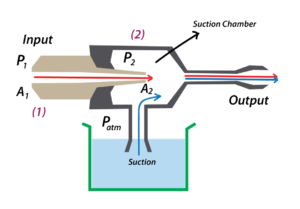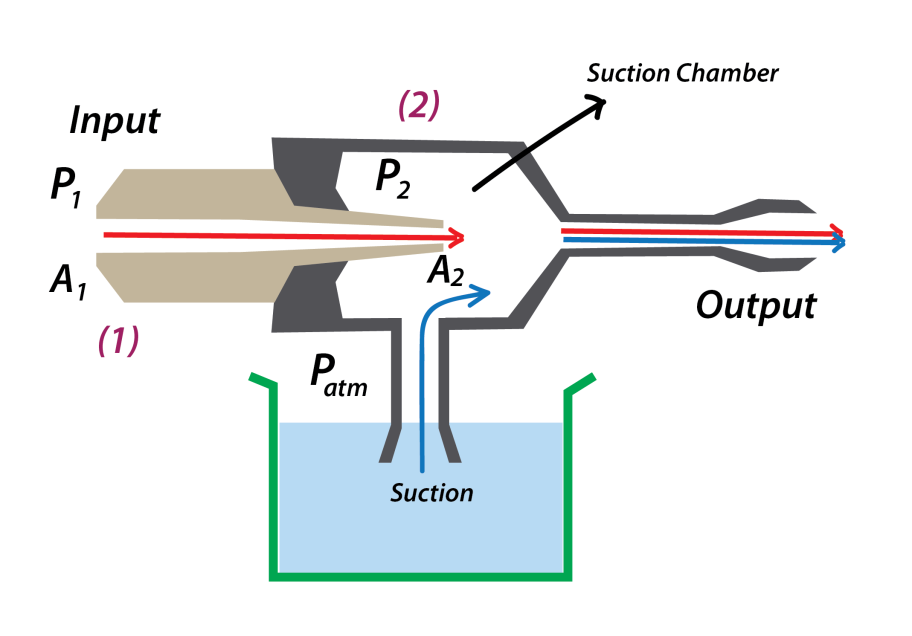We are often asked how a water powered pump actually works. The principle used by all Venturii pumps is the Bernoulli Principle, discovered by Daniel Bernoulli in 1738. The mathematical formula is quite involved and beyond the scope of this article. Because of this principle, there are no moving parts in a water powered pump of this type. The force of the water under pressure narrowed down into a jet across an opening produces negative pressure at the opening. It’s strong enough to cause suction to pull fluid up into the joining point and is forced out through an exit pipe.
Having said all that, it needs to be understood that this type of “pump” is not actually a pump, per se, but an educator or sometimes referred to as an ejector. As the water is drawn into the educator, it joins with the motive force water, typically from a municipal water supply, and is then ejected together to the outdoors. A water powered pump using this principle, is very powerful on the suction side of the equation, but because the exit pipe now includes the sump water and the “city” water, the discharge is much weaker. And now you know why Basepump in particular, is mounted at the top of the pumping cycle rather than at the bottom. This utilizes the strength of the Venturii to its fullest extent and increases the efficiency to the max. See diagram below.

So all that’s required to make this work is a reliable water source (city water supply), some piping to connect the pump to the water supply, a valve to control said water supply, a pipe to pull water up to the Venturii form the sump, and another pipe to discharge the water to the outside. That seems simple enough, right? The control valve needs a float installed in the sump to turn it on when the water rises above normal and turns it off when the water is removed. And there you have it: a workable backup pump system to operate when the primary sump pump fails.
I welcome and appreciate your questions and comments.

